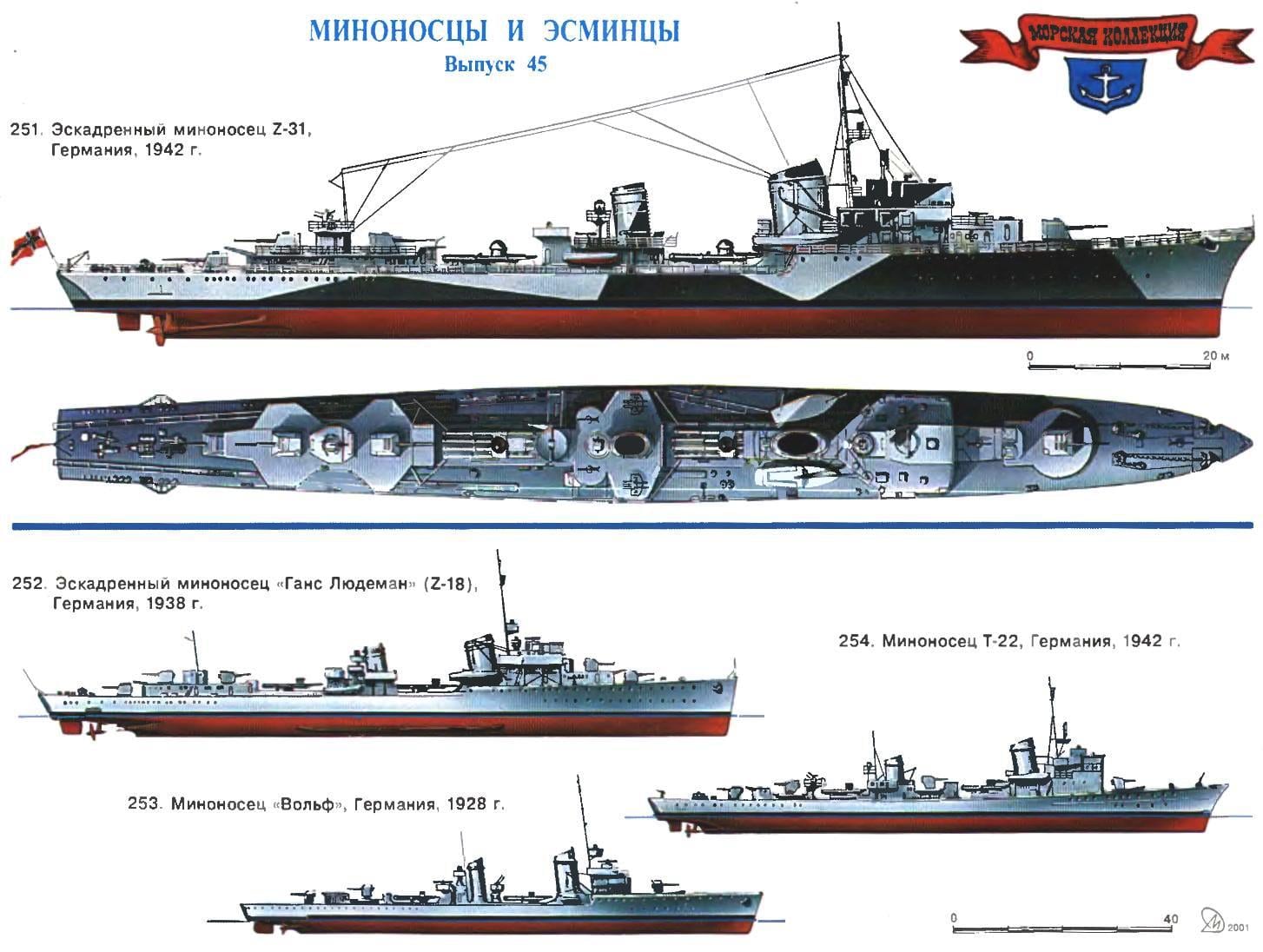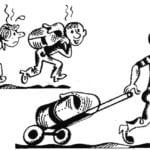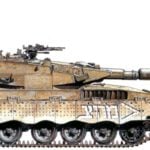 Conditions signed in 1919 in the Versailles peace Treaty that ended the First world war, the German Navy was devastating. The winners, especially the British, insisted on almost total elimination of the fleet once the second naval power of the world. The Germans were allowed to have mine force, consisting of only twelve destroyers and an equal number of destroyers. The latter can be attributed to this squadron destroyers only conditionally: they all belonged to the pre-war series had weak arms and worn-out mechanisms. It is significant that the newest unit of the fleet of the Weimar Republic was the destroyer S-23, which came into operation six months before the start of the war.
Conditions signed in 1919 in the Versailles peace Treaty that ended the First world war, the German Navy was devastating. The winners, especially the British, insisted on almost total elimination of the fleet once the second naval power of the world. The Germans were allowed to have mine force, consisting of only twelve destroyers and an equal number of destroyers. The latter can be attributed to this squadron destroyers only conditionally: they all belonged to the pre-war series had weak arms and worn-out mechanisms. It is significant that the newest unit of the fleet of the Weimar Republic was the destroyer S-23, which came into operation six months before the start of the war.
Passed seven long years of chaos, hunger and unemployment, until the Germans took over the restoration of its naval forces. The state of the industry and technology remained so poor that the engineers, the shipbuilders had to rely on obsolete projects, military time. The first series of six ships named after birds of prey. Curiously, the Germans immediately began to ignore the restrictions of Versailles, which they were forbidden to build ships mine warfare standard displacement of more than 800 tonnes, however, observing initially some humility (the displacement of the destroyers series “Move” — from 920 to 935). Armament consisted of three well-proven 105-millimetrovogo sample of 1916 and six torpedo tubes also old, 500-mm caliber. There were some innovations: for the first time on German destroyers appeared gearboxes from turbines to the shafts and three-pipe torpedo tubes. In the early 30-ies of the last was replaced by a new 533-mm has become standard for the vast majority of the navies of the world. Two years later, followed by a second “prey” series of six ships of the “wolf”. In the hope of any way to improve the firepower of the Germans was supposed to equip them with a new 127-mm guns, but the allies considered it a breach of contract, and had to confine themselves to the same caliber — improved 105-mm guns of the sample in 1928.
The arrival in 1933 Hitler to power again altered the situation. The Fuhrer began to prepare for a new war from the first years of the reign. Already in 1934 127-mm gun was installed on “Leopard” and “Lohse”. Destroyers thoroughly errands on the high seas and came to the conclusion that the new artillery is quite good for the armament of future torpedo ships “third Reich”.
At the end of that year on the stocks of the “Deutsche Werke” in Kiel was founded the first real destroyers of the “Maas” (for the year bookmarks series has received the designation “type 34”), Although the Treaty of Versailles formally continued to operate, its restrictive articles already flouted openly and brazenly. Officially declared a standard displacement “type 34” was 1850 t — max, provided by the London naval Treaty. However, the Germans went even further. In fact, this value amounted to 2200 tonnes which is almost the same as that of a very powerful French leaders. Admirals of the Fuhrer (especially Raeder) clearly sought to create the most powerful in its class ship. Another thing is that this aspiration was embodied…
On their ocean-going destroyers, the Germans used the ultra-modern power plant with high operating steam parameters. Boilers system Benson and Wagner had a working pressure, exceeds the standard for that time of 20-25 atmospheres in four or five times! All this is in theory possible to significantly reduce the volume and weight of the mechanical installation. However, the real addiction to technological innovations clearly played a negative role. Not run boilers required careful care and a very high accuracy of the adjustment operation. In practice, pipes and steam lines ran constantly, creating a danger of failure of the ship at the most inopportune moment. The command of the Kriegsmarine was aware of such risk and were very reluctant to send the destroyers in independent operations.
By taking undue risk in an attempt to save on weight, German designers at the same time extremely neraspredeleniya react to saved tons. Five guns, eight torpedo tubes, speed 38 knots — more than ordinary characteristics for a ship in 1500-1700 t (recall, for example, U.S. destroyers), and because the standard displacement “Germans” were more nearly in half! Involuntarily the question arises: what are the savings?
The answer is simple, and it does no credit to the shipbuilders of Germany. Half of the tonnage consumed the body. Very long (over 120 m), it is made of impressive steel sheets, on vast areas which had a thickness of 22 mm, which could not boast of any cruiser. Absolutely do not understand the meaning of such attachments. Shipbuilding steel, 22-millimeter, could not hold a single shell fired by the artillery of any of the destroyers of the time, and except that limited the size of the holes in the explosion directly on the skin. Perhaps the idea was to achieve substantial longitudinal strength to maintain high speed in rough seas, but the German sailors got a nasty surprise. Form the bow was a failure to open ocean and the destroyers came out too “wet” and also badly behaved on the long wave. In the Arctic ocean, they had no time even for a 27-node “pocket battleships” as soon as the weather started to deteriorate.
Has slightly improved the situation in the next six destroyers of the “Galster” (the official designation — “type 36”). Longer and not had such high add-in as their predecessors, they were equipped with oblique “Koperski” stem and is much better behaved on the wave. The rest of the types of “34” and “36” is not much different.
Partly by adjusting the case of seaworthiness, the designers soon reduced all their success, however, does not, on its own initiative. Pondering plans for world domination, Hitler and the commander of the fleet Raeder wanted to implement them with adequate resources. Since the end of the 30-ies of the “Maas” and “Holster” looked at the background of the latest foreign projects very pale, it was decided to establish on the subsequent series “zerstorer” 150-millimeter guns instead of 127-mm. it repeats the story of the First world war. Realizing that the heavy guns will not improve seaworthiness, the designers tried to go for the trick by placing the two bow guns in twin tower installation. The result was extremely unsatisfactory: at the slightest excitement or just for the big course water was poured into the turret compartment, causing short circuits in the wiring and disabling mechanisms. After much anguish on all eight destroyers of the “type 36” (Z-23—Z-30) is suffering of a tower mounted single weapon with a light shield. The result is firepower has increased not so much, especially for 150-millimetrovogo destroyers had to create a special lightweight shell, since the manual feed standard 46-pound on a rampage slowed the rate of fire to unacceptable limits.

251. Destroyer 2-31, Germany, 1942
“Teal 36A mobilization”. It was built by firm “Deshima”. Displacement standard 2610 t full 3540 T. maximum Length 127 m, width 12 m, draft 3,91 m. Capacity twin-shaft turbine installations 70 000 p. p., speed 36 knots. Armament: four 150-mm guns, four 37mm and six 20mm machine guns, two four 533-mm torpedo tubes, 60 min. Total in 1942-1943 built seven units: Z-31—Z-34, Z-37 to Z-39, all of which, except the head, were armed with two-gun nose turret. The destroyers z-37 and Z-32 died in 1944, Z-34 sunk the team, the others are transferred to one of the United States, England (“Nonsec”), France (“Marceau”) and the USSR (“Agile”). American Z-39 subsequently transferred to France for spare parts.
252. Destroyer “Hans Ludemann” (Z-18), Germany, 1938
It was built by the company “Deutsche Werke”. Displacement standard 2430 t, full 3450 T. maximum Length 125 m, width 11,8 m, draft 3,85 m. Capacity twin-shaft turbine installations 70 000 HP, speed 38 knots. Armament: five 127-mm guns, four 37-mm, and seven 20-mm guns, two four 533-mm torpedo tubes, 60 min. Only in 1938-1939, was built six units: “Hans Ludemann”, “Dieter von Roeder”, “Herman Kunne”, “Carl Galster”, “William Heidkamp” and “Anton Schmidt”. All except “Carl Galster”, died in 1940. The last in 1946 was transferred to the Soviet Union and received the name “Rugged”.
253. The destroyer “wolf”, Germany, 1928
Built at the shipyard of the Navy in Wilhelmshaven. Displacement 940 tons standard, full 1310 T. maximum Length of 92.6 m, width of 8.65 metres and draught of 3.51 m. Capacity twin-shaft turbine installations 23 000 HP, speed 34 knots. Armament: three 105-mm guns, two 20-mm machine gun, two three-pipe 500 mm torpedo tubes, 30 minutes in 1928-1929 built six units: “wolf”, “Iltis”, “Jaguar”, “Leopard”, “Lohse”, “tiger”. All were killed in the fighting.
254. The torpedo boats T-22, Germany, 1942
“Type 39”. Built the firm “shihou”. The standard displacement of 1300 tons, full 1765 T. maximum Length 102,5 m, width 10 m, draft 3,25 m. Capacity twin-shaft turbine installation 32 000 HP, speed 33 knots. Armament: four 105 mm guns, four 37mm and six 20mm machine guns, two three-pipe 533-mm torpedo tubes, 60 minutes 1942-1944 built 15 units (T-22 T—36), of which 11 died during the war.
With the beginning of world war II, all theoretical problems have faded into the background. It was necessary to build torpedo ships as soon as possible and in the largest quantities. Therefore, the “type 36A mobilization” did not differ from the previous pre-war, only some of its representatives was established the notorious twin towers in the nose. Speed of construction and the number of the Germans completely lost allies. In contrast to the hundreds of British and American destroyers they managed to put into operation only seven “mobilization” “zerstorer” in their original version and three more units (Z-35, Z-36 and Z-43), which became a living testimony of the complete failure of the idea of weapons of the destroyer 150-mm guns. In the last three and the first series of destroyers, artillery again consisted of five 127-mm guns.
Knowing that a 125-foot ships will look in narrow channels of the fjords, like elephants in a China shop, the leadership of the Kriegsmarine did quite a reasonable step, adding those expensive and not too successful ships, small destroyers. Zalojennye in the years 1936-1938 850-ton T-1, T— 12 is clearly losing any ship of the enemy artillery, but can give shestistolpny volley, only a quarter conceding its “big brothers”. The only 105-mm gun wise was located in the rear and almost never filled with water, and decent speed (35 knots) did “torpedoboote” very useful ships. During the war the Germans introduced in the composition of its fleet of nine destroyers, T-13, T—21, built under the same project.
The undoubted success of the idea of the “new destroyer” led to the appearance of the ships “type 39”. Having heavy artillery brought up to four 105-mm guns, advanced “torpedoboote” series T-22 proved preteenie and with the same power plant could not develop more than 28 knots (turbine missed a couple). Lack of speed has hampered their interaction with the torpedo ships of other projects.
Not too successful technical solutions for the creation of destroyers was supplemented with clear punctures, when used in battles. Daring the operation of the landing in Norway was worth a torpedo forces the “third Reich” almost half of their cash composition. Ten best destroyers that brought mountain Rangers in the port of Narvik, was trapped. Dashing attack of the British fleet of destroyers under the command of Warburton-Lee delayed the departure, and the battleship “Warspite” who dared to enter the narrow Fiord, made the position of the Germans hopeless. Go to any of the German “zerstorer” already failed…
In subsequent years, the command of the Kriegsmarine tried to use — with mixed success — their new ships with a 150-mm guns in the North to RAID and attack the Arctic convoys. As a rule, each artillery skirmish with the British on the bottom went another German destroyer. However, the German sailors managed to achieve several torpedo hits by the British cruiser, in particular, in Edinburgh, carrying Soviet gold as payment for allied equipment. However, the interaction with large raiders did not succeed due to the inability to maintain high speed in harsh Arctic conditions, and at critical moments in the “pocket” and the usual battleships were left without support their torpedo forces.
The last point in the active actions of the German torpedolike ships set battle in the Bay of Biscay in late December 1943. Two British cruiser “Glasgow” and outdated “enterprise” — left no chances of the five great “zerstorer” and six “torpedoboote”, despite the outgunned enemy (19 six-inch and 12 chetyrehluchevoy on Board the British against the German respectively 25 and 24 guns, 150-mm and 105-mm caliber). Three German ship went to the bottom, causing the enemy to virtually any damage. Affected by bad weather, which the Germans could not give full speed. After this outburst the Kriegsmarine destroyers never take any any large-scale operations. The second campaign for world domination of the sea ended for Germany as ingloriously as the first.
V. KOFMAN



